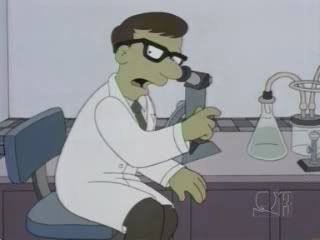
Since Nahum was running a little late for our Sunday morning brew session, I got things rolling by heating up 3 gallons of water (with 1 tsp. of gypsum) and filling up the grain bag for the initial steep. In addition to 8 oz. of British crystal malt (70 - 80L) and 6 oz. of British Amber malt, the recipe called for something we'd not used before: 4 oz. of Belgian candy sugar. It looked like rock candy!


As soon as I mixed it all up in the grain bag and got it steeping...I immediately started to panic. Did I just put rock-candy sugar into the 1st stage of the brew? Wasn't that probably for the carbonation? The recipe didn't suggest I'd gotten it wrong, but I totally convinced myself otherwise (and forgot to relax and have a homebrew). See, one of the good things about having 2 Jews brewing instead of 1 is that we're less likely to make mistakes or overlook something. We've got each other's back, and I think it helps the beer.
Anyway, Nahum arrived, calmed me down, and on we went with the Abbot. After the initial steep, in went 6 lbs. of light dry malt extract. It was a heavy, heady amount of malt, and the wort now had a frothy head and looked like a 3 gallon cappuccino.

As it came back to a boil, we added 1.5 oz. of Progress hops. There was a pretty immediate (and pretty cool) reaction, with a hot break that sent hoppy green tendrils snaking through the beeruccino foam.

On we went: 1 tsp. of Irish moss after 30 minutes of boiling; half an ounce of Progress hops after 80 minutes, and .75 oz. of Fuggles in the last 2 minutes. By the end, it had a lightly hoppy aroma and a dark-straw color that were already hitting good notes.

This batch had called for a 90-minute boil and more water than we usually start with, so the cool-down was clearly gonna be a lot of work. We dunked the pot in an ice bath. but the ice didn't last long and we'd only gotten it down to 75 degrees. We were out of ice in the house, but you know where there was abundant cold on this wet December morning? Outside, that's where. So we strained the beer into the Ale Pail, snapped the lid on, and put the whole thing out on the porch for a couple of hours.
(Nahum took a really cool photo of it with his phone...but then lost it! You'll just have to picture the scene of a big bucket o' beer chillin' on the front porch.)
After lunch, we hauled the pail back in and had a nice, cool wort with an OG of 1.054, which according to the Hopville recipe is right where we want to be to get an alcohol content in the mid-five percents. Then we pitched a very puffed-up Activator pack of Thames Ale Yeast, sealed it back up and put the Abbot away for a long winter's nap.

P.S. - A couple of nights later, I checked on the bitter to see if there were signs of progress. Were there ever! The lid was puckered up, the airlock was full of yeast sludge, and some liquid had spurted out. Again, a panic set in (Nahum had to remind me, once again, to relax and have a homebrew) as I rushed to avoid another Explosivo event. The inside of the lid had a ton of yeast sludge (no wonder that Activator pack had looked ready to burst), but in short order I'd cleaned everything up and got it more or less back in place. Now it seems to be happily bubbling along on the way to being sweet sweet bitter.















































